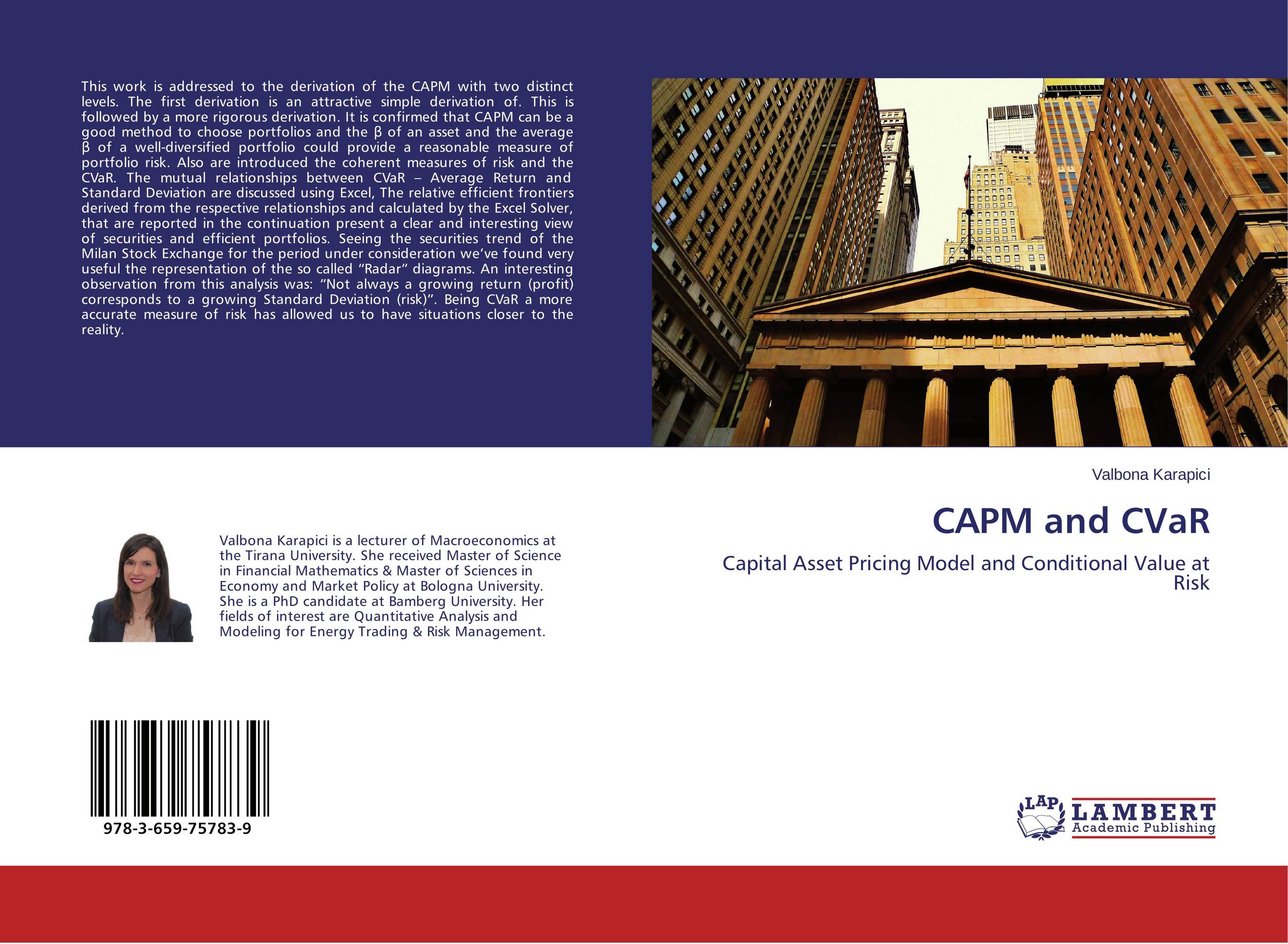| Поиск по каталогу |
|
(строгое соответствие)
|
- Профессиональная
- Научно-популярная
- Художественная
- Публицистика
- Детская
- Искусство
- Хобби, семья, дом
- Спорт
- Путеводители
- Блокноты, тетради, открытки
CAPM and CVaR. Capital Asset Pricing Model and Conditional Value at Risk

В наличии
| Местонахождение: Алматы | Состояние экземпляра: новый |

Бумажная
версия
версия
Автор: Valbona Karapici
ISBN: 9783659757839
Год издания: 2015
Формат книги: 60×90/16 (145×215 мм)
Количество страниц: 60
Издательство: LAP LAMBERT Academic Publishing
Цена: 24982 тг
Положить в корзину
| Способы доставки в город Алматы * комплектация (срок до отгрузки) не более 2 рабочих дней |
| Самовывоз из города Алматы (пункты самовывоза партнёра CDEK) |
| Курьерская доставка CDEK из города Москва |
| Доставка Почтой России из города Москва |
Аннотация: This work is addressed to the derivation of the CAPM with two distinct levels. The first derivation is an attractive simple derivation of. This is followed by a more rigorous derivation. It is confirmed that CAPM can be a good method to choose portfolios and the ? of an asset and the average ? of a well-diversified portfolio could provide a reasonable measure of portfolio risk. Also are introduced the coherent measures of risk and the CVaR. The mutual relationships between CVaR – Average Return and Standard Deviation are discussed using Excel, The relative efficient frontiers derived from the respective relationships and calculated by the Excel Solver, that are reported in the continuation present a clear and interesting view of securities and efficient portfolios. Seeing the securities trend of the Milan Stock Exchange for the period under consideration we’ve found very useful the representation of the so called “Radar” diagrams. An interesting observation from this analysis was: “Not always a growing return (profit) corresponds to a growing Standard Deviation (risk)”. Being CVaR a more accurate measure of risk has allowed us to have situations closer to the reality.
Ключевые слова: Capital asset pricing model, Conditional Value at Risk, Portfolio Efficiency



